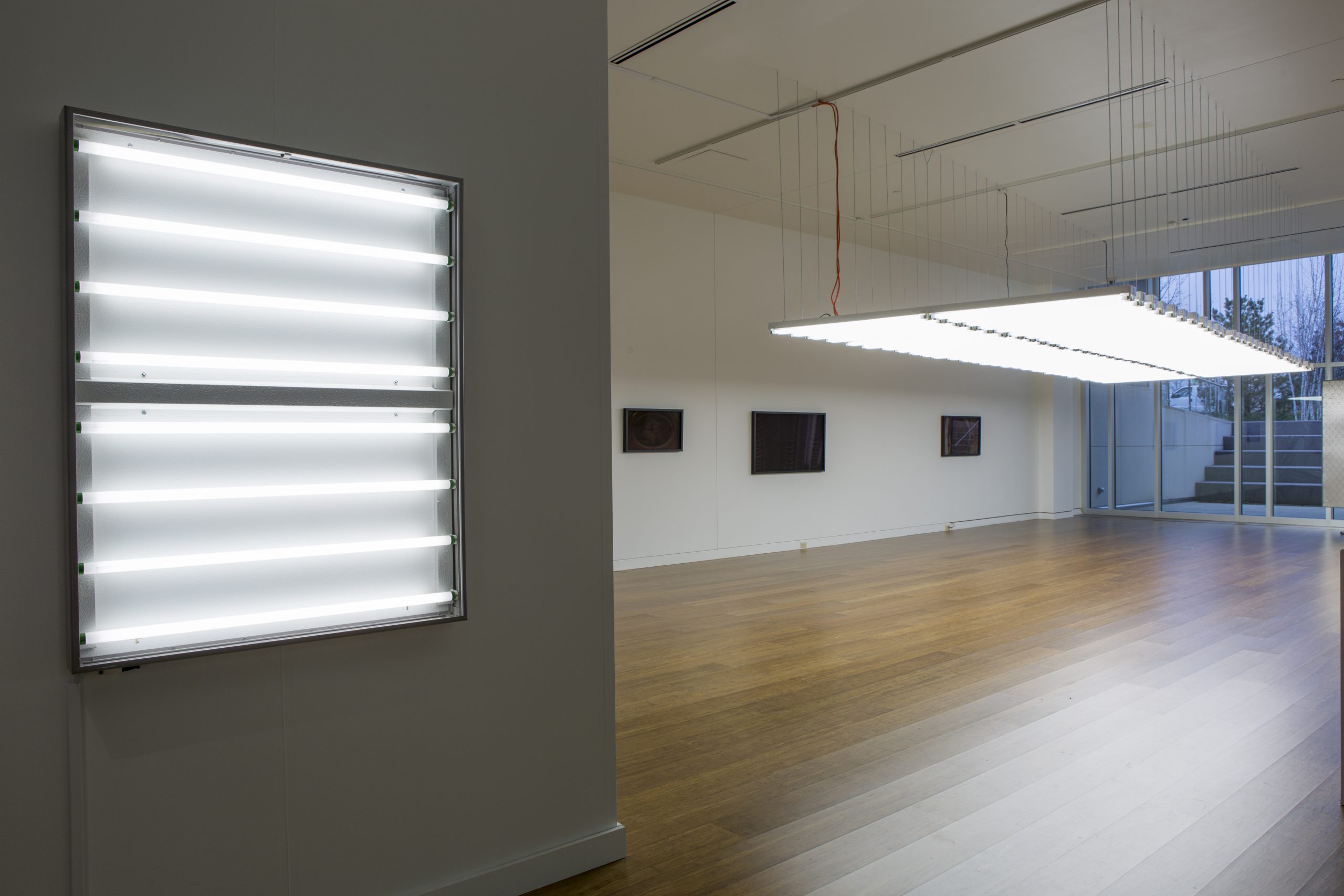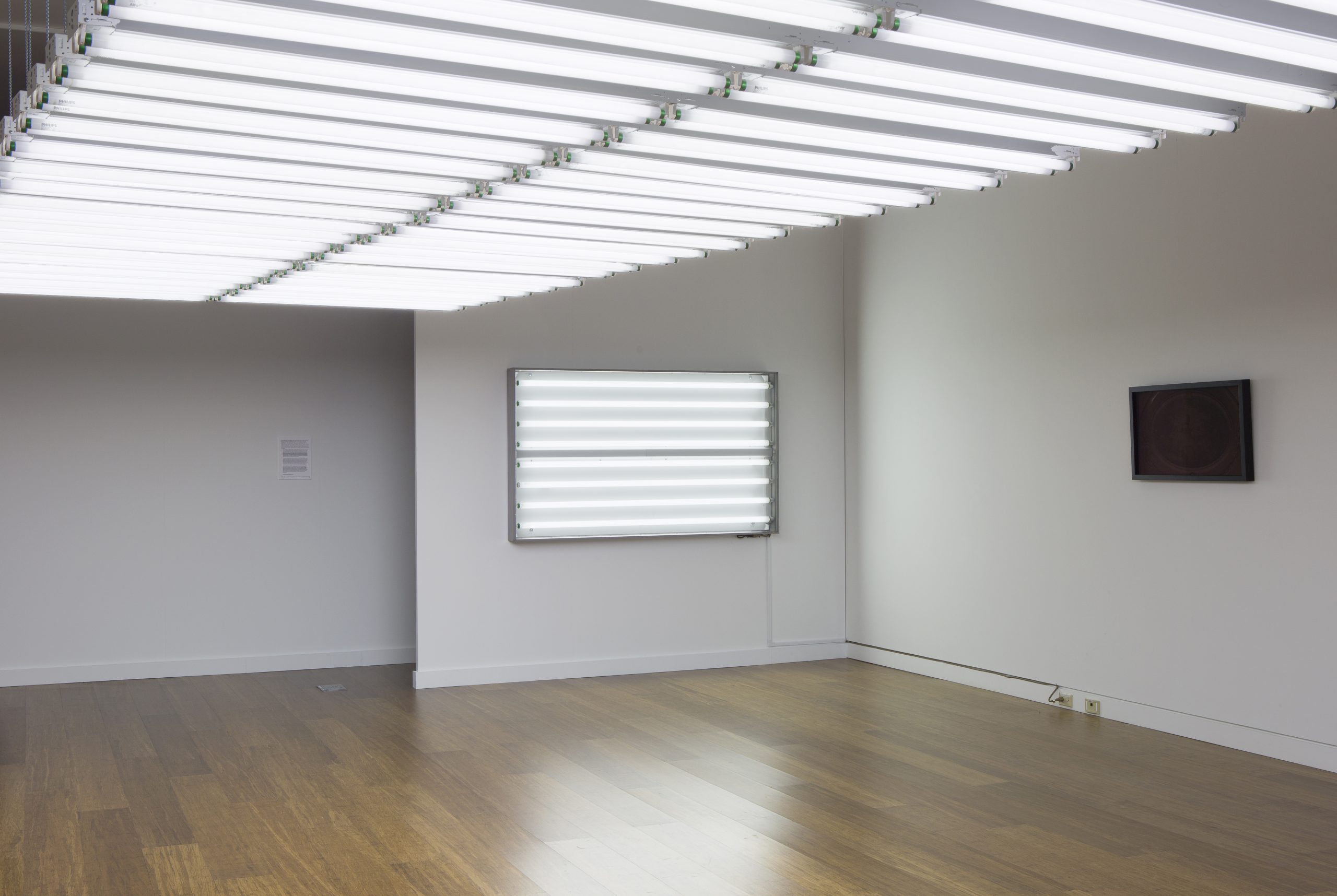Dark Light






Archival pigment prints and fluorescent light sculpture installation
Hironaka & Suib, 2017
Excerpt from catalog essay All that is solid melts into air, David Hartt, 2017
When it opened in 1915, the Parkway Theatre in Baltimore was opulent in character, it had a grand tearoom and a marble lobby decorated in the Beaux-arts style with chandeliers modeled on those of Versailles. Later, the theatre would host D.W Griffith’s controversial 1915 silent feature film Birth of a Nation. A fictional recounting of events surrounding the Civil War and the rise of the Klu Klux Klan, the film is harrowing in its degradation of African-Americans. The NAACP, formed only a few years earlier, protested the screenings of what, even in 1915, was determined to be racist propaganda.
Concurrently, Birth of a Nation was one of the first films to have been screened in the White House. President Woodrow Wilson, after watching it, was alleged to have remarked: It is like writing history with lightning, and my only regret is that it is all so terribly true.
The Parkway Theatre, now derelict, is located at the intersection of North Avenue and N. Charles Street which saw protests following the death in April of 2015 of Freddie Gray, an African-American man fatally injured while in Baltimore police custody.
Created on the centennial anniversary of both the film and theatre, Writing History With Lightning, is a single channel video work by the artists Nadia Hironaka and Matthew Suib. Produced by selecting and altering various scenes from D.W. Griffith’s film Birth of a Nation, Hironaka and Suib projected the looped sequences onto the walls of the Parkway Theatre and captured the spectral images with a high-definition camera. Ten minutes in length, the resulting work recasts the conflicted legacies of both the original film and the architectural space – a critical accounting of ideological and spatial obsolescence.